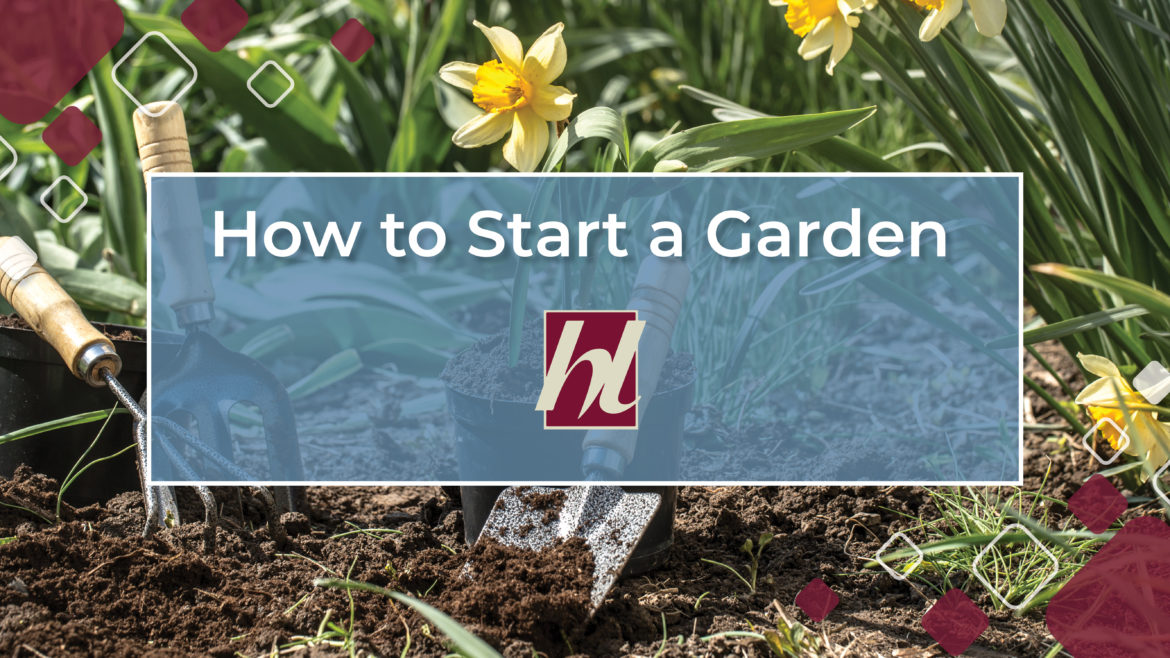How to Start a Garden
Your home is more than just your physical house. Adding and maintaining a garden can be a lovely addition to the exterior of your home, gracefully adding to the ambience and color of your environment. In addition to any flowers that might speckle your outdoor space, growing fresh fruits and vegetables can also help you cook healthier, tastier meals. Here are the basic steps to starting your garden.
Decide What You’d Like to Grow
It’s important to give this step some dedicated thought. After all, what you decide to plant will shape your gardening experience. Would you like some fresh vegetables or colorful flowers? How much work are you envisioning each week? Once you’ve got a firm idea of your vision, you can move towards implementing it.
Plan Your Space
Your garden will be the main focus and fixture of this area of the property – make sure you take the time to map out what shape and location you are envisioning. Keep in mind how much space your plants will need to grow, especially if they have deep root systems or bloom into large vegetables.
Invest in the Right Tools
Your local gardening outlet or cooperative will be an enormous asset during this process. Talk with a professional or consult the web as to which tools will be necessary for maintaining and tending to your preferred plants. Some basic starters include durable gloves, garden shovels, leaf rakes, and garden hoes. A full list of helpful tools can be found here.
Test and Nurture Your Soil
The acidity of your soil will have an enormous impact on the success of your plant growth. Take a soil sample to your local co-op, and they should be able to run a diagnostic test for you. Whether your soil is alkaline or acidic, or contains pebbles or clay, will influence how you till and fertilize it. After you have a clearer picture of your treatment plan from your local gardening professional, it’s time to get down to business.
Acquire Your Seeds or Transplants
Choose the seeds or existing plants that fit your vision of your garden. If you are transplanting, try to choose plants whose pot is roughly the same size as the plant – if a large plant in a small pot is placed in your huge plot of fresh soil, it may have trouble adapting its tangled roots to the open space.
Plant!
Time to break ground! With seeds, be careful not to plant them too deep: it’s recommended that you only bury them at a depth of 2-3 times their width. Younger plants will generally be more fragile, so take extra care with young transplants.
Nurture Your New Plants
The most important and most time-intensive part of maintaining a garden is just that – the consistent maintenance. Making sure your plants have adequate space, water, sunlight, and fertilizer will be a constant endeavor. These necessities also change depending on what you decide to grow. Some crops require direct exposure and little water, and others require ample shade. You might need to segment your garden into different treatment zones for different plants. Keep a daily log of your gardening endeavors to make these tasks more manageable.
Harvest and Enjoy
After you’ve successfully transformed the exterior of your home, don’t forget to enjoy it! Harvest your fruits and veggies, and enjoy the gorgeous flowers. You’ve earned it!
Give Your Home a Lift with House Lift
Spruce up your home with House Lift. Updating your house can be stressful, especially when you’d like to spend your time entertaining or relaxing. Before starting your next home project, call a professional at House Lift. We give free consultations with remodeling experts that can help create a vision for your project and devise the best action plan for your family. Contact us and start upgrading your Minnesota home today.


No Response